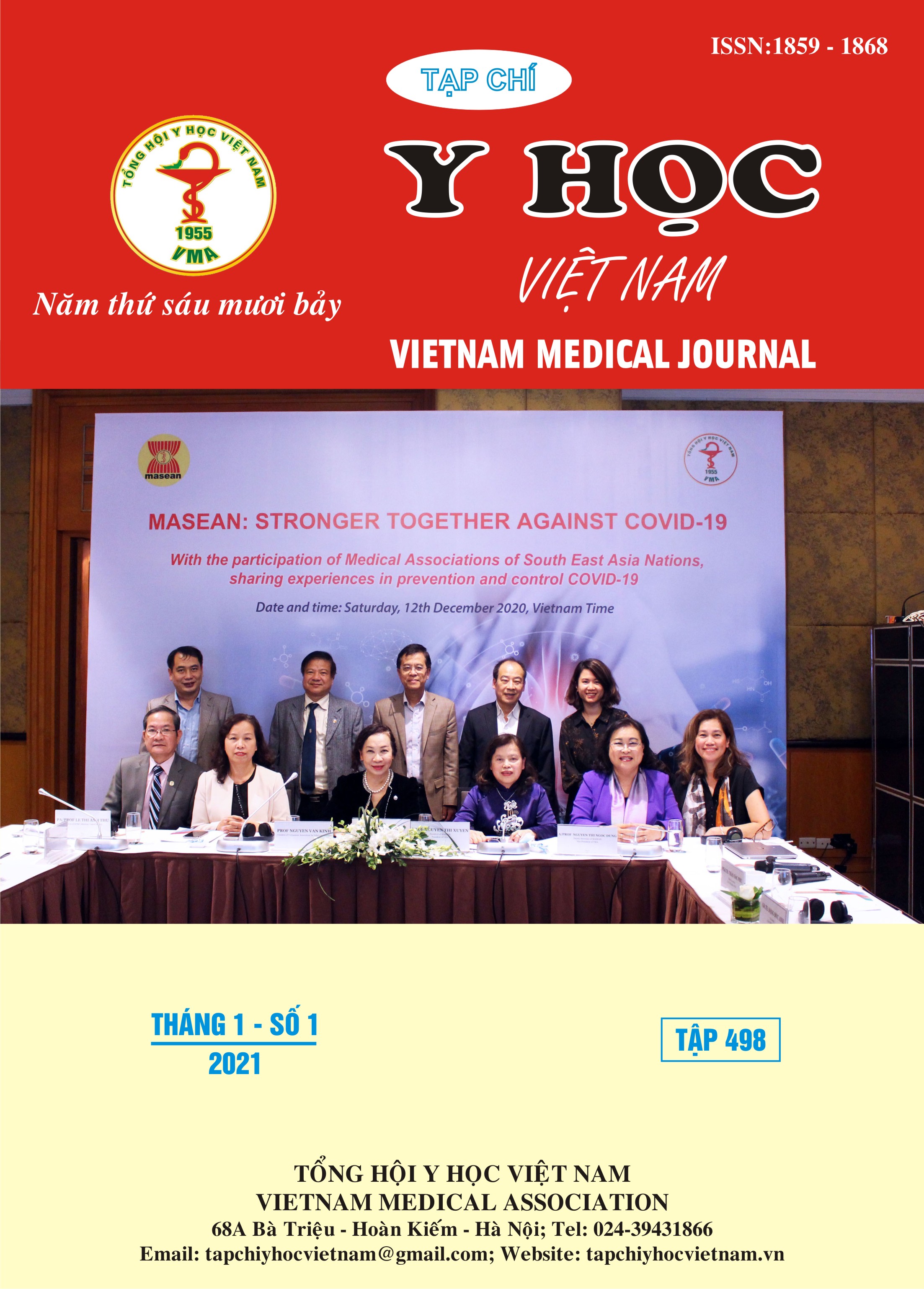RISK FACTORS ASSOCIATED WITH MORTALITY RATE FOR SEVERE ADENOVIVUS PNEUMONIA IN PICU OF THE NATIONAL CHILDREN HOSPITAL
Main Article Content
Abstract
Aims: Adenoviruse is an important pathogen of severe pneumonia in children. The study aimed to assess risk factors and outcomes with severe Adenovirus pneumonia. Methods: This cross – sectional descriptive study was conducted at the Pediatric Intensive Care Unit of the National Children Hospital from 11/2016 to 06/2018. All patients with confirmed diagnosis of severe Adenovirus pneumonia were included in the study. The characteristics and outcomes of the patients were compared usingc2test. Logistic regression analysis was performed to identify risk factors. Results: 90 patients with Adenovirus severe pneumonia were studied, mortality rate was 33,3%. Septic shock (OR= 2,8; 95%CI: 1,89 – 4,04),malnutrition (OR= 3,41;95%CI: 1,29 - 9,02), hepatomegaly (OR= 8,64; 95% CI: 2,89 – 25,8),severe pneumonia (OR=1,7; 95%CI: 1,4 – 2,08),interstitial pneumonia (OR= 7,5; 95%CI: 2,77 – 20,33),neutropenia (OR= 4;95%CI: 1,2- 13,6), leucocytosis (OR= 4,6; 95%CI: 1,4 – 15,0), lymphopenia (OR= 5,8; 95%CI: 1,4– 24,3), Hb <100 g/l (OR= 8,7; 95%CI: 1,9 – 40,03), Albumin ≤ 35g/l (OR= 16,8; 95%CI: 2,1 – 131,9), P/F < 200 (OR= 11,3; 95%CI: 1,4 – 90,9), Lactat > 2,5 (OR= 3,4;95%CI: 1,26 – 9,2) are factors that increase the risk of death in patients with severe adenovirus pneumonia.After using logistic regression analysis show the independent factors that predict the risk of death arehepatomegaly (OR= 8,4; 95%CI: 1,66 – 43,4); neutropenia (OR= 11,9; 95% CI:1,2 – 120,7). Conclusion: Mortality rate is high for severe Adenovirus pneumonia in children. Hepatomegaly and leucopenia are factors that increase the risk of death in patients with severe Adenovirus-associated pneumonia
Article Details
Keywords
Adenovirus, children, pneumonia, risk factor
References
2. Cherry, R.D. Feigin, J.D. Cherry et al. (2009). Textbook of pediatric infectious diseases. 6th ed. WB Saunders, Philadelphia, 1843–1862.
3. Chuang Yu, Chiu CH , Wong KS et al. (2003). Severe adenovirus infection in children. Journal of Microbiology, Immunology, 36(1):37-40.
4. Joseph P. L, Michael F, Marcela E.(2011). Adenovirus. Seminars in respiratory and critical care medicinr, 32 (4), 496.
5. Đào Minh Tuấn, Nguyễn Thị Ngọc Trân. (2017). Nghiên cứu một số đặc điểm dịch tễ và lâm sàng của viêm phế quản phổi do Adenovirus tại Bệnh viện Nhi Trung ương từ tháng 1 đến tháng 6 năm 2016 đến năm 2017. Y học thực hành tập 739- số 10.
6. Chen-Yin Lai. (2013). Adenovirus Serotype 3 and 7 Infection with Acute Respiratory Failure in Children in Taiwan, 2010–2011. PLOS Genetics. January 10.17:196
7. Du Fang. (2013). Mixed infection and risk factor in children with severe adenovirus pneumonia. Children's Hospital of Chongqing Medical Univerity, China, 15(5): 375-8
8. Huang M, Luo R, Fu Z. (2017). Risk factors for poor prognosis in children with severe adenovirus pneumonia. Zhongguo Dang. Chinese Journal of Contemporary Pediatrics, 19(2): 159-162.
9. Le Thanh Hai, Hoang Ngoc Thach, Ta Anh Tuan, et al. (2014). Adenovirus Type 7 Pneumonia in Children Who Died from Measles-Associated Pneumonia, Hanoi, Vietnam. 22(4):687-90


